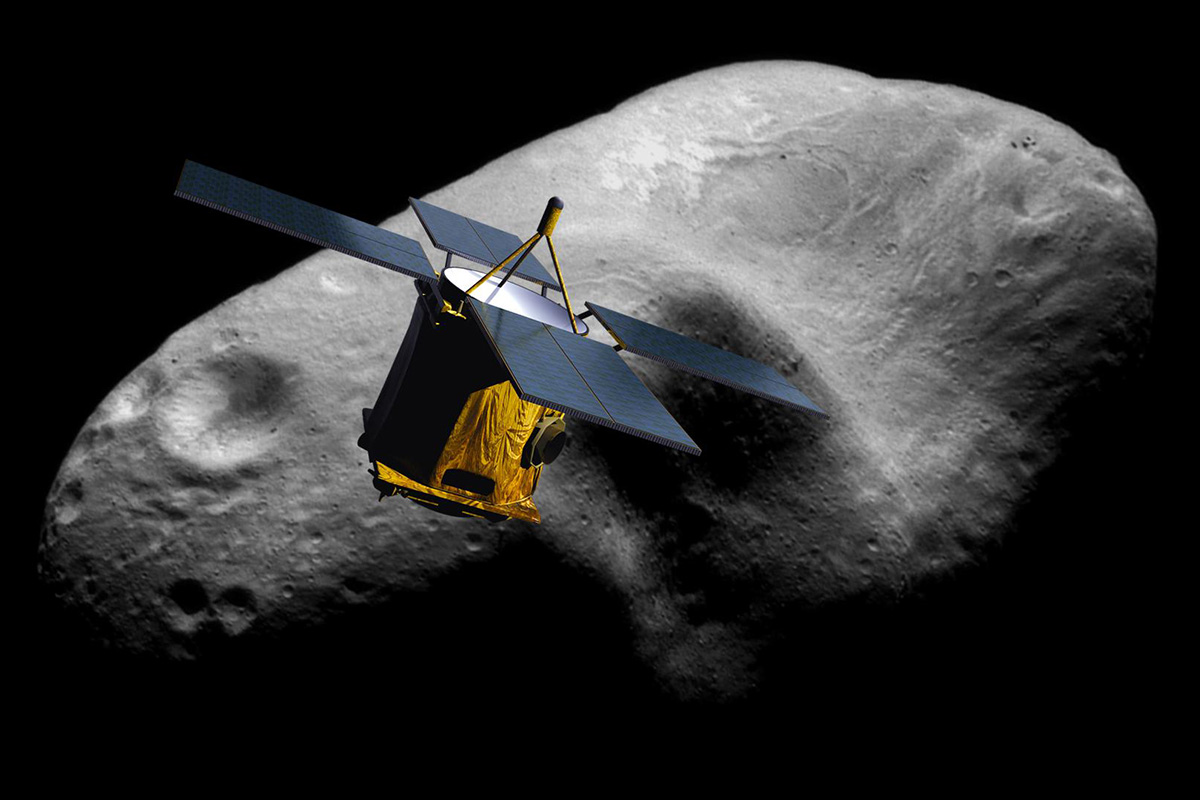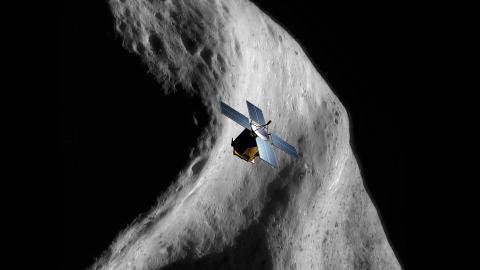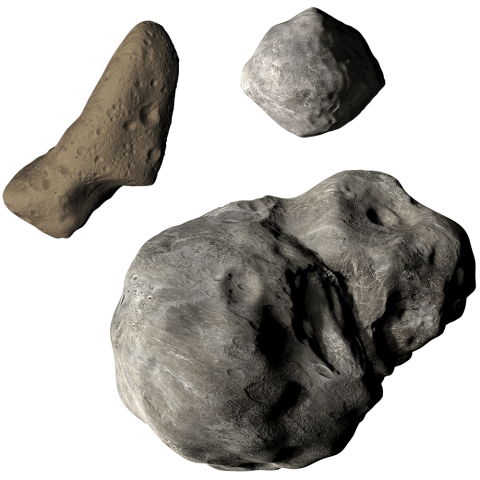NEAR’s primary goal was to rendezvous with asteroid 433 Eros, some 221 million miles (355 million kilometers) from Earth, and gather data on its geophysical properties, mineral components, morphology, internal mass distribution, and magnetic field.
Spacecraft and Instruments
Elegantly simple in its design, the APL-built and -operated NEAR spacecraft carried a science payload that included a visible-light imager, an infrared spectrograph, a 3-axis magnetometer, an x-ray/gamma-ray spectrometer, and a laser rangefinder. The telecommunications subsystem was also used for radio science by measuring the two-way Doppler from normal spacecraft telemetry.
On the way to Eros, the spacecraft became the first to rely on solar cells for power during operations beyond Mars’ orbit. A month after beginning its orbit at Eros, in March 2000, the spacecraft was renamed NEAR Shoemaker, to honor the late planetary geologist Eugene Shoemaker.
Results and Expectations
Recovering from a year’s delay in reaching Eros during its first attempt at orbit insertion, NEAR turned out to be successful far beyond its original mission plan.
After a year in orbit around Eros, on Feb. 12, 2001, NEAR Shoemaker made a gentle, picture-perfect three-point landing on the tips of two solar panels and the bottom edge of the spacecraft body. But the mission wasn’t finished yet; to the amazement of the mission team and millions of observers around the world who were following the descent, the touchdown was so elegant that the craft was still operating and sending a signal back to Earth even after landing.
Jumping at the chance to get “bonus science” from the spacecraft, which had already collected 10 times more data than originally planned, the mission team reconfigured the spacecraft to collect composition readings for 10 more days — gathering data to help it classify Eros and determine the relationship between the asteroid and meteorites that have fallen to Earth.
NEAR Shoemaker now rests silently on Eros, having succumbed to the cold of deep space nearly two decades ago — and setting a high bar for low-cost planetary exploration that guides missions today.



